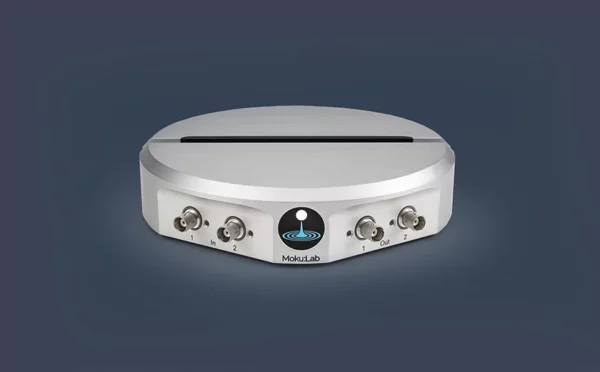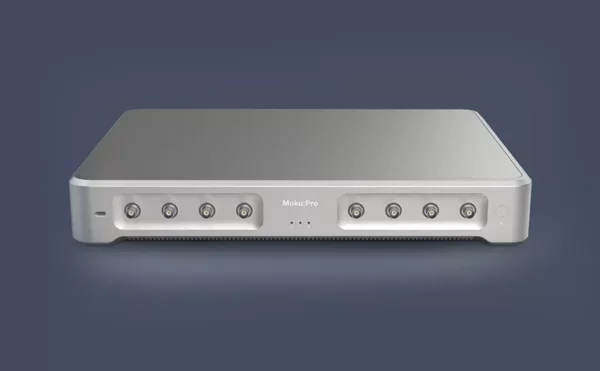Frequency Response Analyser
The Moku Frequency Response Analyser enables you to measure the frequency response of a system in both magnitude and phase using a swept sine output from 10 mHz to 500 MHz. With up to four inputs and outputs available for Moku devices, it’s easy to enable differential or ratiometric measurements.
Select up to 8192 points per sweep and configure settling and averaging times to balance total sweep duration and signal-to-noise ratio.
Below is the Frequency Response Analyser’s user interface showcasing some of the key features explained below:
Key Features of the Frequency Response Analyser:
With one-touch normalization, an integrated Oscilloscope, and advanced saturation detection and adjustments, you can expect more from the Moku Frequency Response Analyser.
Stimulate and measure for complete characterization with the Moku Frequency Response Analyser
Apply a swept sine signal to your device under test to view the system response in magnitude and phase. Independently configure up to four inputs and four outputs, allowing you to probe up to four systems simultaneously, or one system at four points.
One-touch normalisation to see the real response of your device under test
Isolate the magnitude and phase response of the system under test by normalising out intrinsic delays and magnitude errors introduced by cables and Moku:Pro itself. Save a normalisation trace to compare systems or remove spurious cable shifts
Live Bode plots for real-time frequency response analysis
Monitor the magnitude and phase on the interactive Bode plot, allowing you to make measurements across fundamental and harmonics to characterize nonlinear effects.
Configurable math channel for enhanced flexibility
Use the math channel to add, subtract, multiply, divide, or calculate arbitrary complex-valued equations as you acquire response functions. Easily graph a system’s output over input to make precise two-port impedance response measurements.
Engineered to work seamlessly with your preferred APIs
Use the math channel to add, subtract, multiply, divide, or calculate arbitrary complex-valued equations as you acquire response functions. Easily graph a system’s output over input to make precise two-port impedance response measurements.
Applications:
- Component characterisation
- EMI filter characterization
- Impedance measurement
- Power supply analysis
- Stability analysis


































